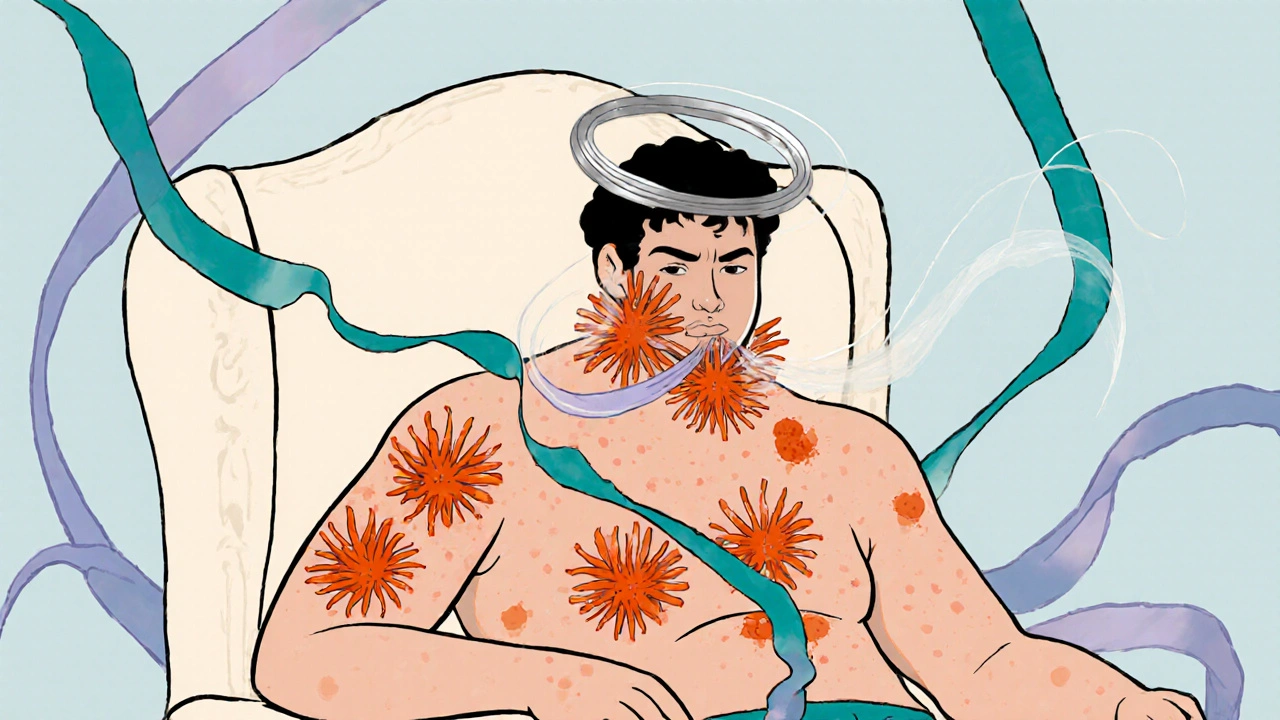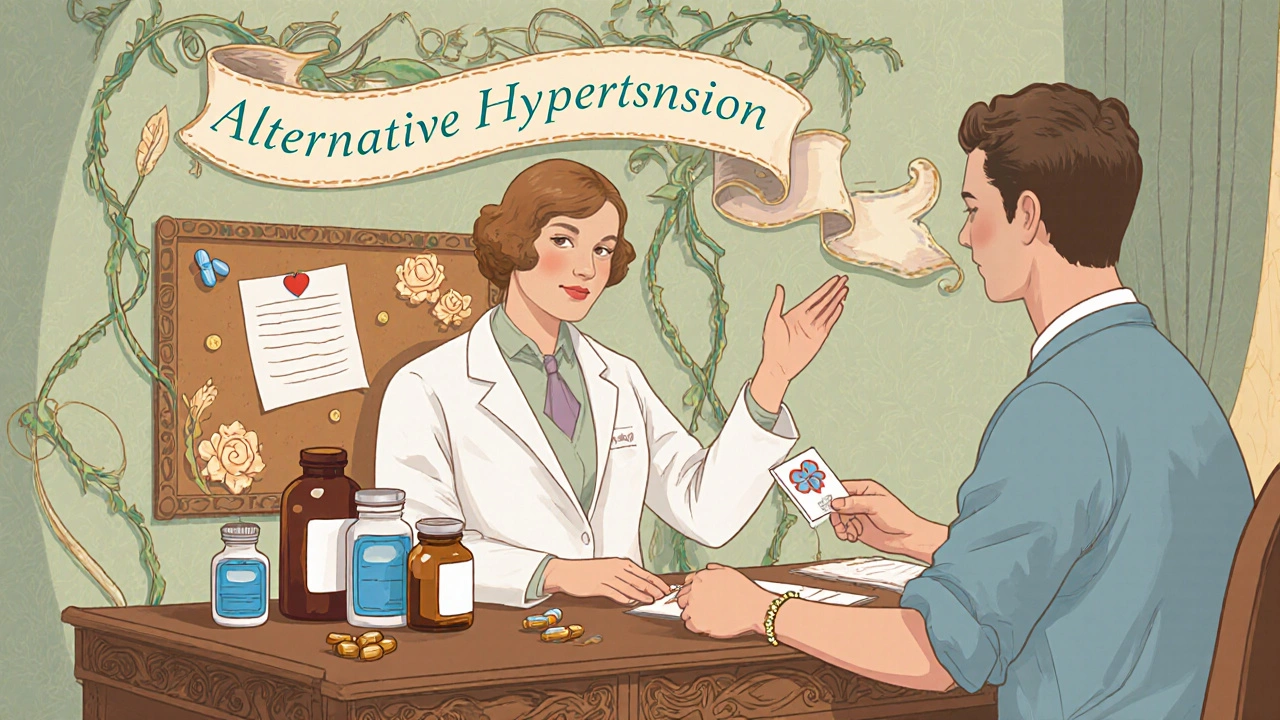Metoprolol and Allergies: What to Watch Out For

Oct, 25 2025
When you’re prescribed Metoprolol a selective beta‑1 blocker used to treat high blood pressure, angina, and certain heart rhythm problems, you expect it to tame your heart‑related issues. But what if the drug itself triggers an allergic response? Knowing the warning signs, the difference between a side effect and a true allergy, and the steps you should take can protect your health and keep you on the right treatment path.
What Is Metoprolol and Why Is It Prescribed?
Metoprolol belongs to the beta‑blocker family. It works by blocking beta‑1 adrenergic receptors in the heart, which reduces heart rate, lowers blood pressure, and eases the workload on the muscle. Doctors commonly use it for:
- Hypertension (high blood pressure)
- Chronic angina (chest pain)
- Post‑myocardial infarction protection
- Arrhythmias such as atrial fibrillation
Because it targets the heart specifically, Metoprolol tends to have fewer respiratory side effects than non‑selective beta‑blockers, making it a go‑to choice for many patients.
How Do Drug Allergies Differ From Regular Side Effects?
Not every unpleasant symptom means you’re allergic. A side effect is a predictable pharmacologic reaction that many people experience-think fatigue or mild dizziness when you start a new blood pressure pill. An allergy, however, is an immune‑mediated response that can range from a mild rash to a life‑threatening anaphylaxis. The key differences are:
- Onset: Allergic reactions can appear within minutes to hours after the dose, whereas side effects often develop over days.
- Mechanism: Allergies involve IgE‑mediated hypersensitivity or other immune pathways, not just the drug’s direct action on the body.
- Re‑challenge Risk: Re‑exposing yourself to an allergen can trigger a more severe reaction. Side effects usually don’t worsen dramatically on repeat dosing.
If you’re unsure whether a symptom is a side effect or an allergy, it’s safest to contact your prescriber right away.
Typical Metoprolol Side Effects (Non‑Allergic)
These are the most common, usually mild, and often subside as your body adjusts:
- Fatigue or feeling unusually tired
- Dizziness or light‑headedness, especially when standing up quickly
- Cold hands and feet due to reduced circulation
- Mild gastrointestinal upset (nausea, stomach discomfort)
- Brief episodes of low blood pressure (hypotension)
While uncomfortable, these symptoms rarely require stopping the medication unless they persist or become severe.
Warning Signs of a Metoprolol Allergy
Allergic reactions can mimic other problems, but certain clues point specifically to an immune response. Keep an eye out for:
| Symptom | Typical Side Effect | Allergic Reaction |
|---|---|---|
| Skin rash | Rare, usually mild redness | Urticaria (hives), widespread red bumps |
| Breathing difficulty | Occasional shortness of breath (non‑selective beta‑blockers) | Wheezing, throat tightness, possible asthma‑like attack |
| Swelling | None | Angioedema - swelling of lips, face, or tongue |
| Rapid heart rate | Usually slower heart rate (bradycardia) | Paradoxical tachycardia due to anaphylaxis |
| Gastrointestinal upset | Mild nausea, stomach ache | Severe abdominal cramping, vomiting |
| Systemic symptoms | Fatigue, dizziness | Fever, chills, drop in blood pressure, loss of consciousness |
If any of the allergic‑reaction column items appear, treat them as a possible allergy and seek medical advice immediately.

Why Do Some People React Allergically to Metoprolol?
Allergies to beta‑blockers are rare but documented. The immune system can mistakenly identify the drug-or one of its inactive ingredients-as a foreign invader. Possible mechanisms include:
- IgE‑mediated hypersensitivity: Antibodies bind to the drug and trigger mast cell degranulation, releasing histamine.
- Immediate‑type (type I) reactions: These present within minutes and can lead to anaphylaxis.
- Delayed‑type (type IV) reactions: Cell‑mediated responses that appear days later, often as a rash.
Risk factors that increase the chance of an allergic response include a personal history of drug allergies, existing atopic conditions (eczema, allergic rhinitis), or a family history of hypersensitivity.
What to Do If You Suspect an Allergy
Act quickly but stay calm. Follow these steps:
- Stop the medication: Do not take another dose until you’ve spoken with a healthcare professional.
- Assess severity: If you experience swelling of the throat, difficulty breathing, or a sudden drop in blood pressure, call emergency services (000 in Australia) right away.
- Contact your prescriber or pharmacist: Explain the symptoms, timing, and any previous allergy history.
- Document the reaction: Write down the exact dose, how long after taking it the symptoms began, and what the symptoms were. This helps the clinician decide if it’s an allergy.
- Follow medical advice: You may be instructed to get an allergy work‑up, such as skin prick testing or a blood test for drug‑specific IgE.
Never try to self‑diagnose. A qualified professional can differentiate a true allergy from a side effect and advise on safe alternatives.
Managing Your Blood Pressure Without Metoprolol
If an allergy is confirmed, you’ll need a beta‑blocker replacement or an entirely different class of antihypertensive. Options include:
- Selective beta‑1 blockers other than metoprolol: Atenolol, bisoprolol (cross‑reactivity is possible, so testing is essential).
- ACE inhibitors: Lisinopril, ramipril - good for hypertension, but watch for cough or angioedema.
- Calcium channel blockers: Amlodipine, diltiazem - useful especially if you have concurrent angina.
- ARB (angiotensin‑II receptor blockers): Losartan, valsartan - lower risk of cough and angioedema.
Discuss these alternatives with your doctor. They’ll consider your overall heart health, kidney function, and any other medications you’re taking.
Drug Interactions That Can Mask or Exacerbate Allergic Symptoms
Some medicines can hide an allergy or make its symptoms look worse. Keep an eye on these common culprits when you’re on Metoprolol or any replacement:
- NSAIDs (ibuprofen, naproxen): Can increase histamine release, worsening rash or swelling.
- Antihistamines: May mask mild skin reactions, delaying diagnosis.
- Other antihypertensives: Combining beta‑blockers with calcium channel blockers can lead to excessive heart rate slowing, mimicking an allergic sign of bradycardia.
Always inform your prescriber about over‑the‑counter drugs, supplements, and herbal products you use.

Living With a Drug Allergy: Practical Tips
Beyond the immediate medical steps, everyday habits can reduce risk and keep you prepared:
- Carry a written note or wallet card that lists "Allergic to Metoprolol" along with any other drug sensitivities.
- If prescribed an epinephrine auto‑injector for severe reactions, make sure you know how to use it and keep it accessible.
- Update your medical records regularly-especially when you change doctors or travel.
- Consider wearing a medical alert bracelet.
- Keep a symptom diary for at least a month after switching medications; this helps spot delayed reactions.
When to Seek a Specialist
Most drug‑allergy cases are handled by primary care physicians, but certain scenarios call for an allergist or immunologist:
- Repeated unexplained rashes after starting different medications.
- Severe anaphylactic reactions that require emergency care.
- Need for desensitization protocols if Metoprolol is the only viable option for your heart condition (rare but possible).
Specialists can perform skin prick tests, graded oral challenges, and counsel on long‑term management.
Key Takeaways
- Metoprolol is a widely used beta‑blocker, but a true allergy-though rare-can happen.
- Distinguish side effects (fatigue, mild dizziness) from allergic signs (hives, swelling, breathing trouble).
- Stop the drug and seek urgent care if you notice severe symptoms.
- Work with your doctor to find a safe alternative and document the allergy.
- Stay prepared with allergy identification tools and a symptom diary.
Frequently Asked Questions
Can Metoprolol cause anaphylaxis?
Yes, although extremely uncommon, Metoprolol can trigger a severe IgE‑mediated reaction leading to anaphylaxis. Immediate medical attention is essential if you notice throat swelling, difficulty breathing, or a sudden drop in blood pressure.
How long after taking Metoprolol can an allergic reaction appear?
Immediate reactions can start within minutes to an hour, while delayed skin rashes may surface 24‑48 hours later. Any new symptom after starting the drug warrants a call to your clinician.
Is it safe to try another beta‑blocker after a Metoprolol allergy?
Cross‑reactivity can occur, especially with other selective beta‑1 blockers like atenolol. An allergist can perform testing to determine if a different beta‑blocker is safe, or you may need to switch to a different drug class entirely.
Do over‑the‑counter meds worsen a Metoprolol allergy?
NSAIDs such as ibuprofen can boost histamine release, potentially intensifying rash or swelling. Always check with your pharmacist before combining OTC drugs with prescription medications.
Should I carry an epinephrine auto‑injector?
If you’ve had a severe reaction (e.g., throat swelling or anaphylaxis), your doctor may prescribe an auto‑injector. Even with milder reactions, having one on hand provides peace of mind.
